Fermented foods are deeply permeated into daily life in Japan. There are many kinds, such as miso, natto, and pickled vegetables. I make my homemade miso every year, and I’ve been into making an enzyme syrup in the last several years. My father is a farmer, and he grows rice, vegetables, and some fruits. We harvest a lot of delicious lemons every year. So I tried making enzyme lemon syrup, and then I was quite surprised at its tastiness. Today I’ll share that lemon enzyme syrup recipe I usually make.
Advantages of fermented foods
Enzymes naturally exist in our human body, and they help digestion, absorption, metabolism, and egestion and are absolutely essential. Fermentation increases the number of microorganisms that produce enzymes, which in turn improves shelf life, adds umami flavor and aroma, and increases nutritional value and health-regulating functions. In addition, fermented foods help nutrients to be more easily absorbed into the body, enhance immunity, support youthfulness, improve metabolism, prevent lifestyle-related diseases, and reduce stress. It would be a great benefit for our health in every direction if we could easily incorporate fermented foods into our daily lives.
How to Make
| ingredients lemon 1kg (2.20lb) sugar 1.1kg (2.70lb) |
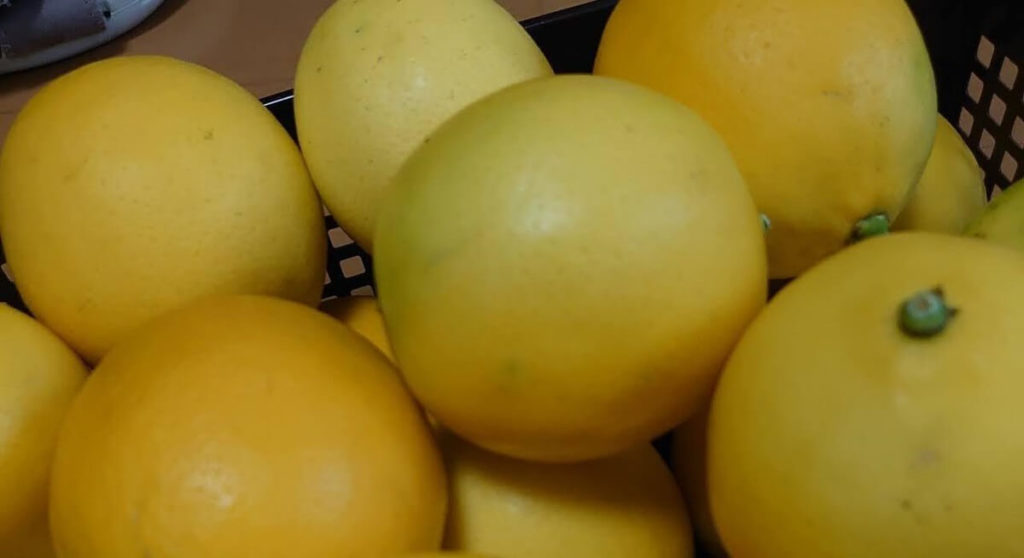
1. Rinse lemons in cold water and wipe them dry.
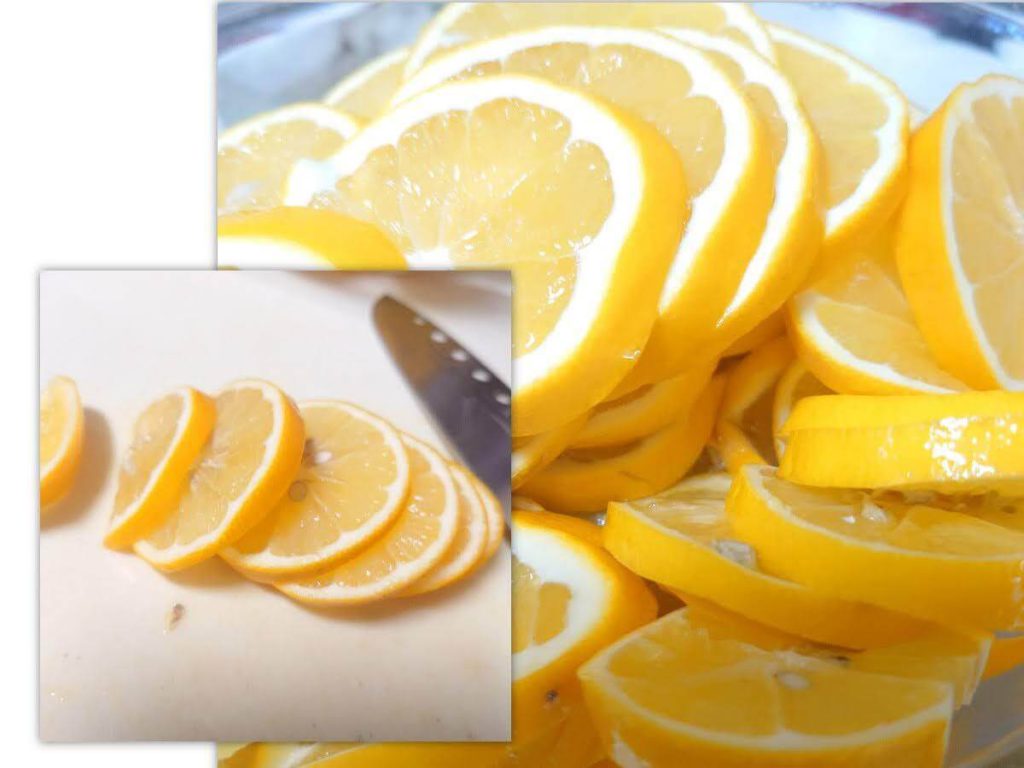
2. Cut off both ends of the lemon and slice them thinly.

3. Boil a wide-mouth jar and let it dry. ( if possible, also sterilize it with alcohol )

4. Add the contents in the order of sugar and lemon until the container gets full. When there will be no more space to add sugar , wait until the next day when the sugar gets melted and you get more space. Then, you can add all the rest of the sugar prepared.
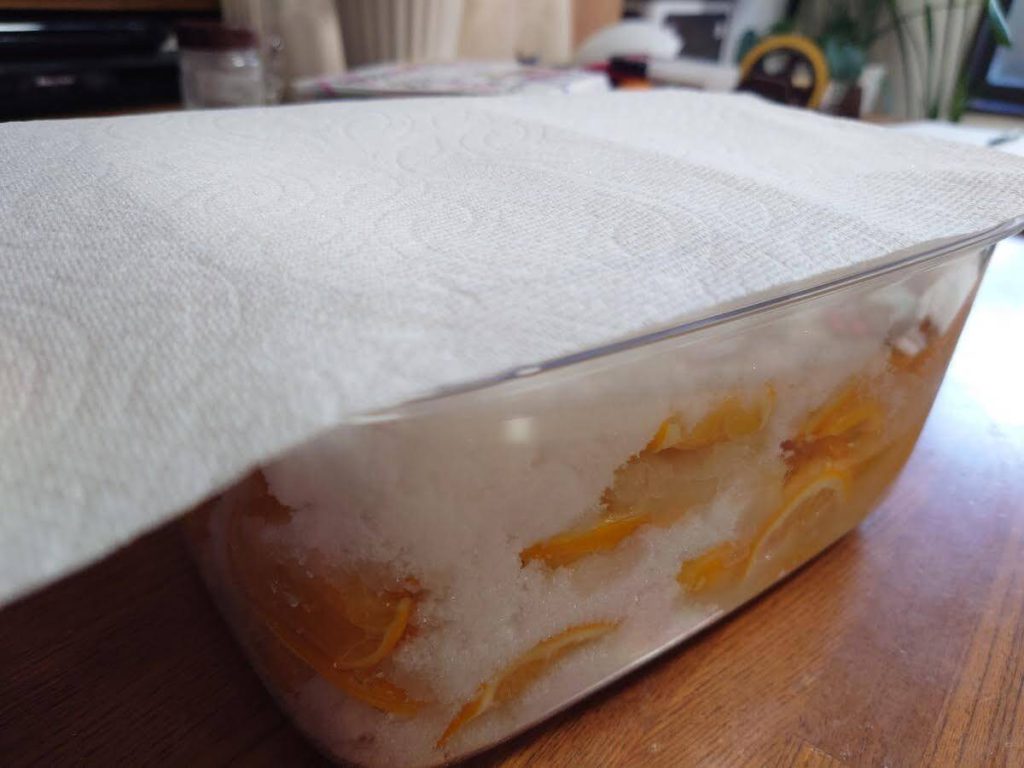
5. Don’t cover the jars with lids, but cover them lightly with kitchen paper.

6. Mix with bare hands once a day.
After mixing it every day, bubbles will appear and fermentation will begin. After 2 to 3 months , when the bubbles have subsided, it’s done. Remove the lemon and refrigerate only the juice in the jar. Leave an air hole in the lid of the jar to keep the fermentation process going. You can also freeze the juice in a ziplock or other container.
Now, enjoy the resulting enzyme syrup with water or soda, in a cup of tea, or over vanilla ice cream!
Why Mix it By Hand?
There is a lot of wild yeast on fruitpeels. And also there are normal inhabitants on hands. Then, by mixing with human hands, these inhabitants in the hands help the fermentation process, and the yeast accelerates the fermentation. This process mellows the flavor of the syrup and makes it very tasty.
So keeping your hands clean is a must. Before mixing the syrup, always wash them under running water for 15 to 30 seconds without soap and dry well.
Ways to Enjoy Removed lemon
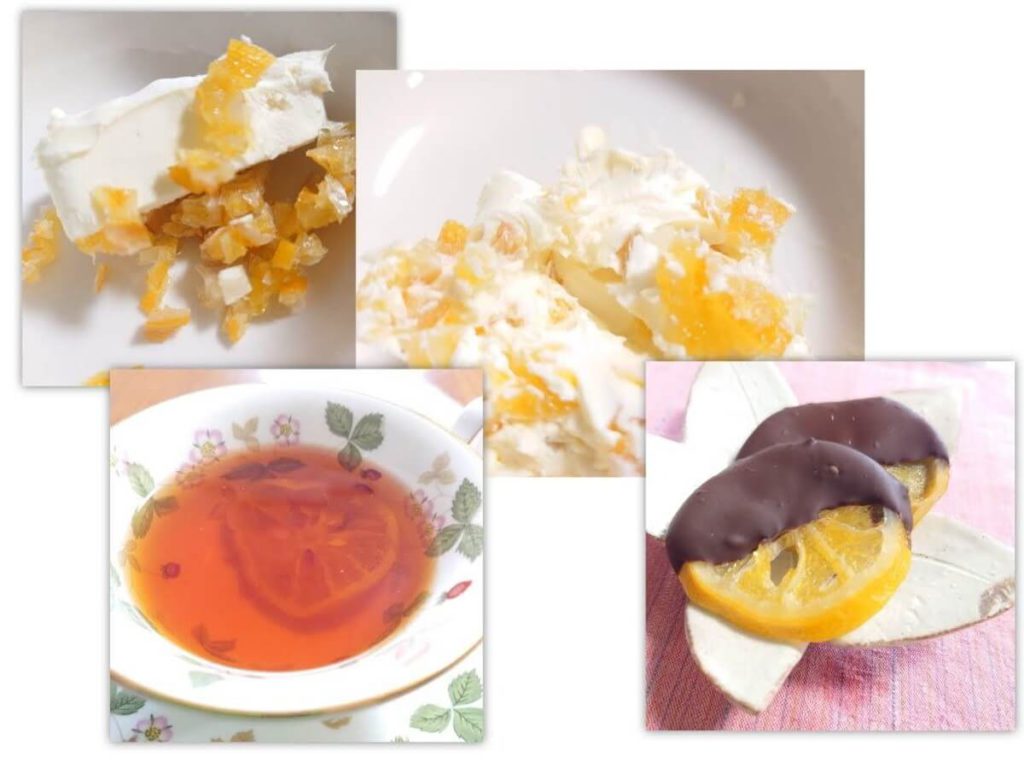
Of course, you can eat these lemons.
☆After drying, cover with chocolate
☆Chop and mix with cream cheese and spread on bread or crackers
☆Use as ingredients for homemade cake
☆Put it in water as a flavor water
☆Put it in tea
Other Tips
You can make this fermented enzyme juice with other fruits you want. I think citrus fruits are the best, so oranges are good. Some juices are simply soaked in sugar, but by taking the time and effort to mix the juice in sugar, it is transformed into a mild, flavorful, and delicious juice. You can also enjoy the changes in taste as the juice is being made. Please try to make it. It would be a good opportunity if you could try fermented foods easily!
Thank you for reading to the end. See you next time
Amazing! Yuzu and Lemon –
I’m a clay artist, and a master of Japanese calligraphy “Onore-sho”. I have my own shop in Ikaruga town, Nara, which is near Horyuji temple: world heritage site. And I’m a volunteer English tour guide. I enjoy learning English everyday.

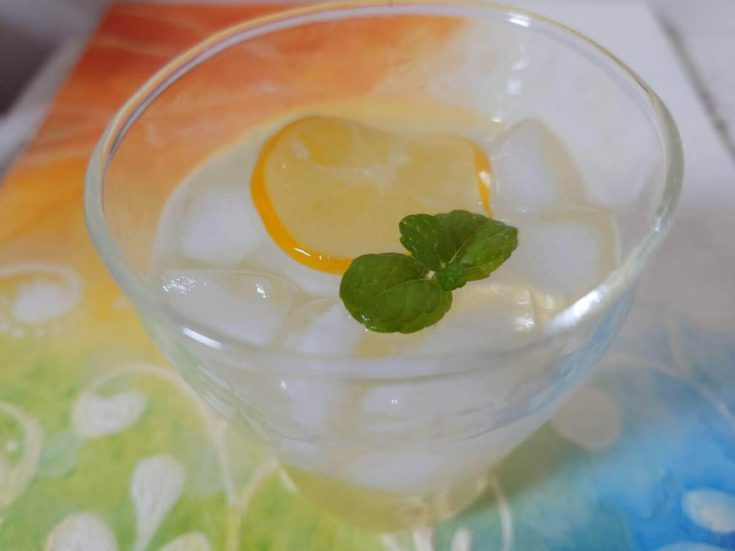



 HTJ has a YouTube page! Check it out
HTJ has a YouTube page! Check it out